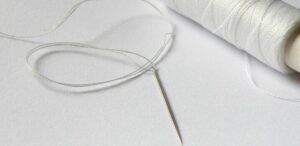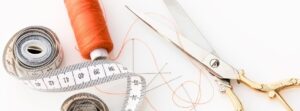Sewing’s like any new adventure—it comes with its own lingo. Makes sense, right? Wrapping your head around these terms can seriously up your sewing game. Getting the basics down ensures you’re not scratching your head when someone tosses the word ‘selvage’ into a conversation.

Let’s break sewing terms down, starting with needles, pins, threads, and fabric. These are the roots of every sewing project. Needles come in all sizes, and picking the right one is key. Threads? They aren’t just colors to match; there’s cotton, polyester, and silk—each serving a different purpose. Fabric, it’s like a paint palette for artists. Know the types, and you’ve opened up a world of creativity.
Then, there’s your machine’s anatomy—ever heard of a bobbin? This little thing holds threads and sits out of sight but is crucial. The presser foot? It keeps fabric in place while stitching. Knowing these bits means smoother sewing experiences, less frustration.
Stitches are next. A straight stitch is the go-to, like a good pair of jeans. But you’re gonna wanna know about zigzags and others too, each bringing its flair and strength to your projects.
Lingo isn’t just jargon; it’s a toolkit. The more terms you know, the easier it is to communicate about projects, troubleshoot issues, and most importantly, evolve into a skilled sewist.
Tools of the Trade: Equipment You Need to Get Started
Getting into sewing means picking up a few essential gadgets. A reliable sewing machine tops the list. For beginners, a simple model with basic stitches usually does the trick. No need for high bells and whistles—get comfortable with what you’ve got, then level up.
Scissors might seem straightforward, but in sewing, they’re specialized. Your regular kitchen pair won’t cut it, literally. Invest in good fabric scissors just for fabric, plus a smaller pair for snipping threads. Seam rippers are lifesavers for undoing stitches without wrecking your fabric. It’s a tiny hero in a sewer’s toolkit.

A measuring tape is golden, especially for precision, like getting those measurements spot-on. And let’s not forget pins and pin cushions. They might seem old school, but they hold things together long enough for you to sew without going sideways.
With fabric, the choices are endless—cotton, satin, denim, and more. For beginners, cotton is forgiving and easy to work with. As you get comfy, explore different textures and weights. Dive into patterns and sewing books for inspiration; they’re like recipes for crafters—guidelines that help your vision take shape.
Every tool has its place, and knowing which to use when can make your sewing journey not just easier but way more exciting. It’s all about starting with a strong foundation, then letting curiosity lead you to explore the fun, creative stuff.
Demystifying Techniques: Key Skills for Beginner Sewists
Jumping into techniques might seem daunting, but with a bit of patience, it gets rewarding in no time. Hand stitches are great for those moments where the machine feels like overkill or for delicate details. The backstitch is super sturdy, perfect when the machine can’t reach.
Machine stitches, though, become your best friend for speed and accuracy. Learning when and how to switch between hand and machine stitches turns you into a versatile creator.
Seaming techniques are where things get exciting. A French seam might sound fancy, but it’s all about clean, tucked-away edges. Then there’s the flat-felled seam, strong as nails and neat. Overlocking, with a serger, gives those professional factory finishes that make your work stand out.
Don’t skip on cutting and marking skills. Cutting straight and true is crucial, and marking your fabric helps guide your cuts and stitches—it’s like having a dotted line to follow. Use fabric markers or tailor’s chalk, easy to wash out but visible enough to keep you on track.
Pinning and basting prepare your fabric pieces for sewing. Pins are like temporary stitches, holding everything in place perfectly before committing. Basting, a long loose stitch, is useful for piecing things together before the final sew-up, especially in tricky areas.
These skills might seem basic, but they’re foundational—solidifying your grasp on them means you can tackle more complex projects with confidence and flair.
Troubleshooting and Tips: Moving from Novice to Confident Sewer
Even with all the right gear and knowledge, things can go awry. Thread tension is often a culprit for skipped stitches or loops on the fabric’s wrong side. It’s a small adjustment on your machine but makes a big difference. Tweak it until the stitches are smooth and even.
Keeping your machine in tip-top shape is essential too. Regular cleanings, like removing lint and keeping parts lightly oiled, go a long way. A well-maintained machine reduces headache and extends its life. Remember, happy machine, happy sewer!
Everyone messes up, but mistakes can turn into lessons. Maybe you’ve sewn a sleeve backward or cut fabric a bit too narrowly—been there, done that. Instead of frustrations, these moments teach patience and problem-solving. With each project, you’ll see improvement, gaining not just skill but confidence.
To keep progressing, keep learning. Online tutorials, community groups, and books offer endless tips and tricks. Connecting with others in sewing circles can offer support and new ideas. As you continue, you’ll find your style and rhythm, making sewing not just a skill but a beloved creative outlet.
Let me know how you’re doing with your projects. Feel free to reach out with comments, or questions.

